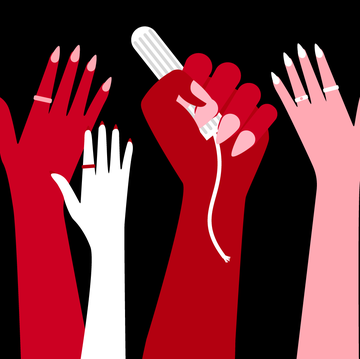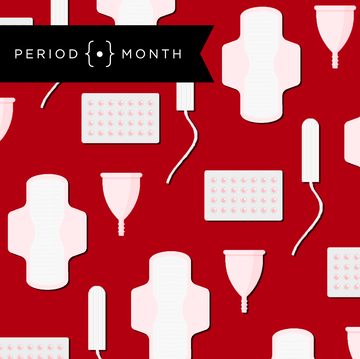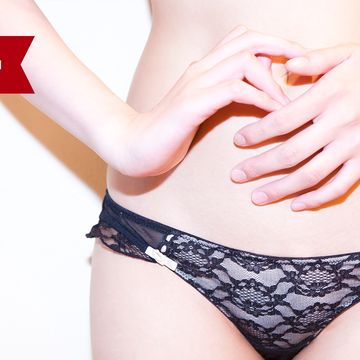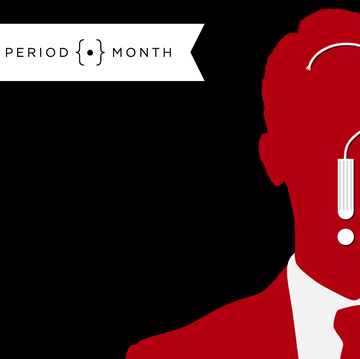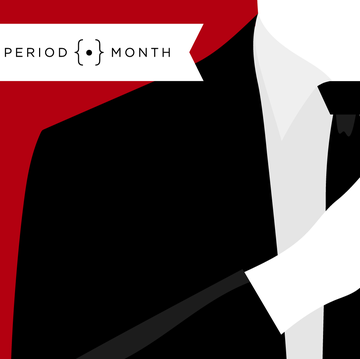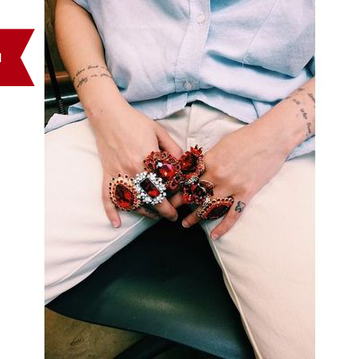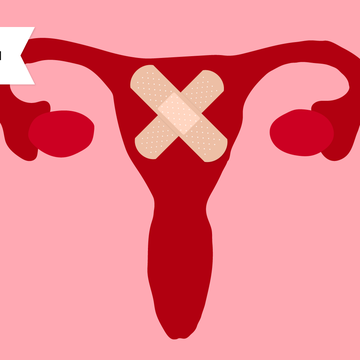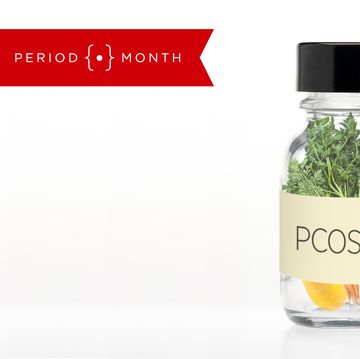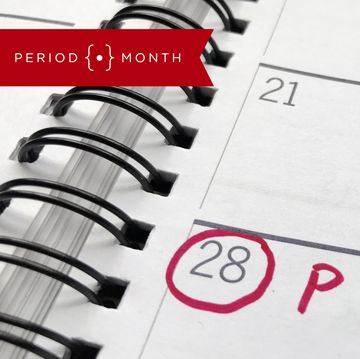Welcome to BAZAAR.com's first ever Period Month, where for an entire four weeks we'll be publishing stories devoted to your period. Our aim is to delve into what really happens during a woman's cycle—and with the help of Flo Living founder Alisa Vitti, we'll teach you how you can harness your hormones as a path to success, power and global change.
It wasn’t until after I stopped taking the pill—i.e. hormonal birth control, which I started at 16 to improve my skin—that I started experiencing painful PMS symptoms.
I had braced myself for what internet forums and friends had warned against: irregular periods, moodiness, cramping, bad skin and weight gain. To my surprise, save for a few drugstore pregnancy test scares, my cycle regulated pretty quickly, with my weight staying relatively the same. But the one thing that did change was the cramps, which grew exceedingly worse every month and left me doubled over in pain, causing me to miss work or cancel plans with friends in favor of sitting in front of Netflix curled up to a hot water bottle with Midol at the ready.
So I considered my options. I could get a hormonal IUD that would defeat the purpose of going off the pill to get away from synthetic hormones—I had been there, done that, and even bought the T-shirt saying “I HATE THIS” in bold, graphic letters across the front). So I decided to do some research into alternative cures and there it was: medical marijuana. I had dabbled in smoking to alleviate anxiety, cramps and general malaise, but I started to hear rumblings of other methods to administer the herbal cure, like vaginal CBD oil suppositories to combat cramps—otherwise known as dysmenorrhea.
I made it my mission to find the product in Toronto, but then promptly forgot about it for a few weeks. If you’re a woman, you’ll know that you tend to forget about your monthly annoyance during in-between times. It wasn’t until I was stumbled upon a chic new shop in my neighborhood—the kind that sells expensive succulents, crystals and locally designed minimalist jewelry—that turned out to be a very stylish dispensary, which happened to carry another version of the vaginal suppositories I had read about.
I promptly bought three capsule-shaped CBD oil jellies containing only 25 mg of THC (these were available in 25, 50 and 100 mg), and anticipated my period with excitement for the first time maybe ever.
Two weeks later it was time to put them to the test. I consulted the directions and went to town. It’s kind of like inserting a tampon without the applicator, that is to say, uncomfortable for the uninitiated, but eventually I got the hang of it. Although studies have not conclusively discovered how cannabis works to combat dysmenorrhea, though some research suggests it helps the nerves in the uterus, cervix and ovaries to relax and block pain by suppressing the mechanisms responsible for inflammation.
So I lay in bed waiting for the medicine to kick in while I caught up on the Kardashians. Halfway through watching one of their elaborately luxurious family vacations, my abdominal muscles released and a calm akin to a very restorative yoga class washed over my body, while my mind retained the same sharp clarity I normally experience after shavasana. There were no psychoactive effects from the THC.
Unlike a tampon, the capsule dissolves in your cervix so you don’t have to worry about it after inserting, and the effects of the suppository lasted long enough that I was able to fall asleep without pain and wake up feeling refreshed and relaxed.
While the capsules, which I’ve nicknamed vagina weed, are simply a treatment of PMS symptoms and not a permanent solution in terms of fixing the root cause, it’s something that has been more effective for me than anything else I’ve found. I now give them to girlfriends as gifts and have heard nothing but positive things about their pain healing powers.
For women in New York who suffer from menstrual cramps, a bill was passed in May that would allow you to legally consume marijuana under the state’s medical marijuana program (it has yet to be signed into law). New Jersey was considering a similar bill last year. Now let's wait for the rest of America to follow suit.
How to Come off the Pill Safely—and Avoid PMS Symptoms Like Cramping
Alisa Vitti, author of WomanCode, reveals how to go off hormonal birth control without the bad side effects:
Many women are put on the pill or synthetic hormones to “treat” hormonal imbalances after receiving a diagnosis for a menstrual disturbance like PCOS or Fibroids. However, being on the pill can deplete you of the very micronutrients and gut bacteria that are essential for having balanced hormones.
Depending on how long you have been on hormonal birth control, two things have happened: first, you are more micronutrient depleted then when you started, and second, whatever the root causes of your hormonal imbalance prior to going on the pill have not only remained unaddressed, but you have been lulled into a false sense of security while being on the synthetic hormones.
Once you realize that synthetic hormones are an obstacle to addressing the root causes of your condition, you find yourself wanting to get off of them. Going off the pill is a great idea if you have a diagnosed hormonal imbalance, so you can have time to deal with the root causes with the most powerful medicine for hormones: functional nutrition! But there’s a way to do it, such that you don’t end up going off cold-turkey and having a major relapse of all of your most dreaded symptoms (which you should expect to come back if you don’t do the following).
Here's how we do it at the FLO Living Hormone Center:
- Commit to two months of changing foods and taking supplements BEFORE coming off the pill—ideally using MonthlyFLO program. Cycle-syncing your diet as part of the FLO protocol and taking probiotics, B vitamins and magnesium, among others, to replace what was massively depleted by synthetic hormones is a must-do baseline for a successful transition.
- Let your GYN know you want to go off and go off safely, and don’t be alarmed if they don’t love this idea, they are trained to use pharmaceuticals as a tool.
- Track your cycle and symptoms vigilantly post pill with the MyFLO app. Look closely at all symptoms and continue adjusting food and supplements until you are back in your FLO.
Post pill, you should have #relationshipgoals with your own cycle—get to know where you are in each phase, and eat the right foods to nourish your hormonal balance throughout the month so you never have to deal with unwanted symptoms again.



